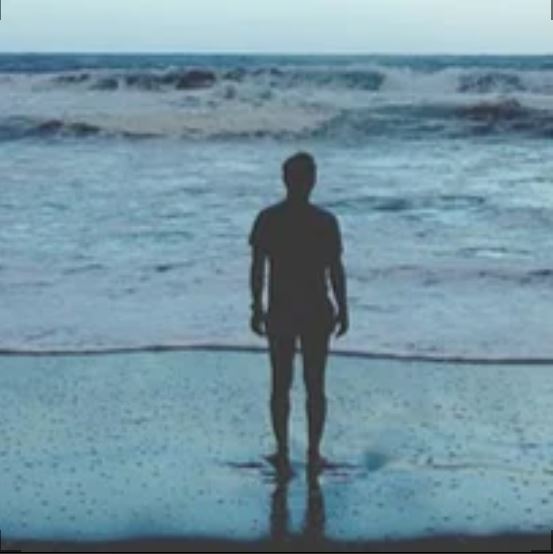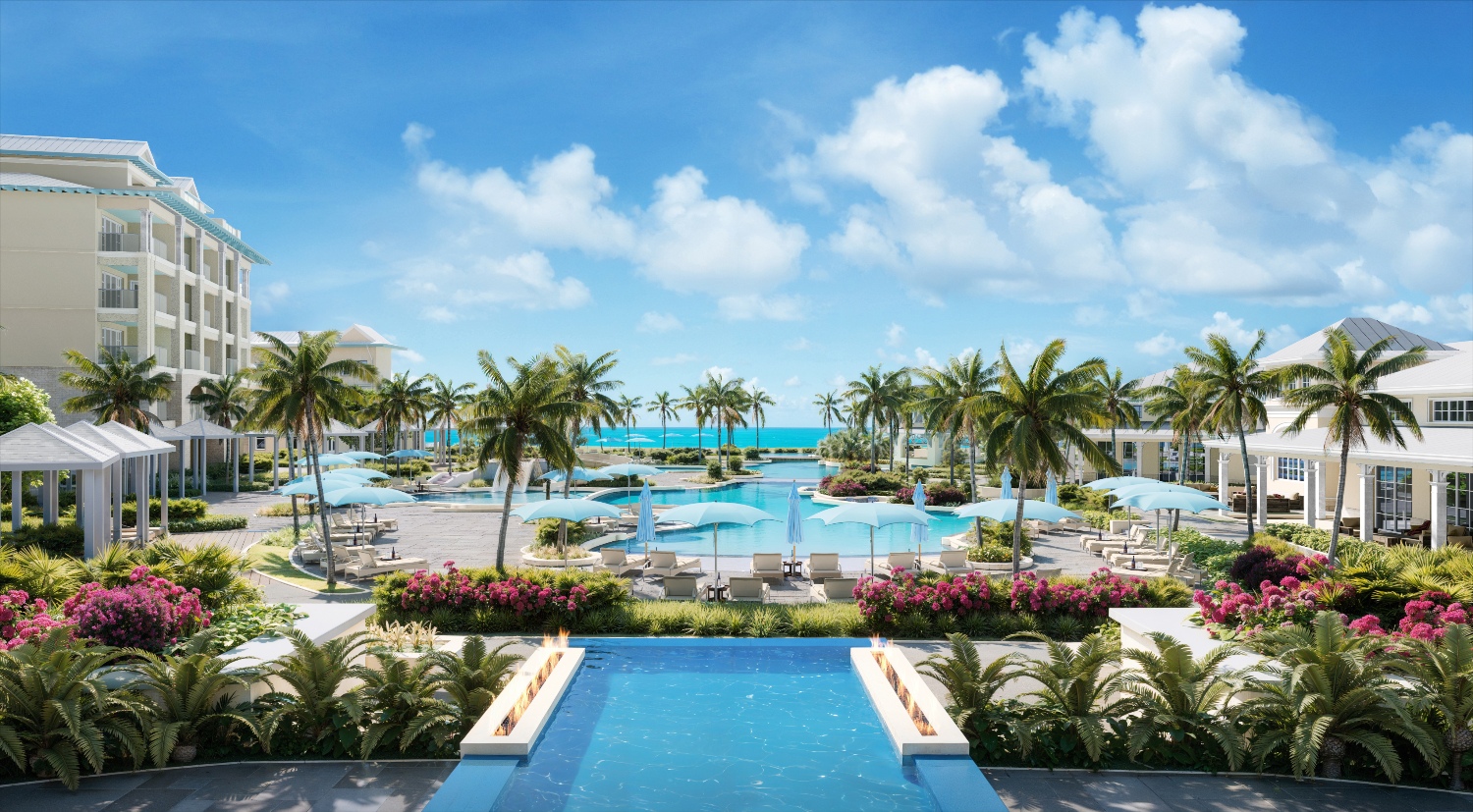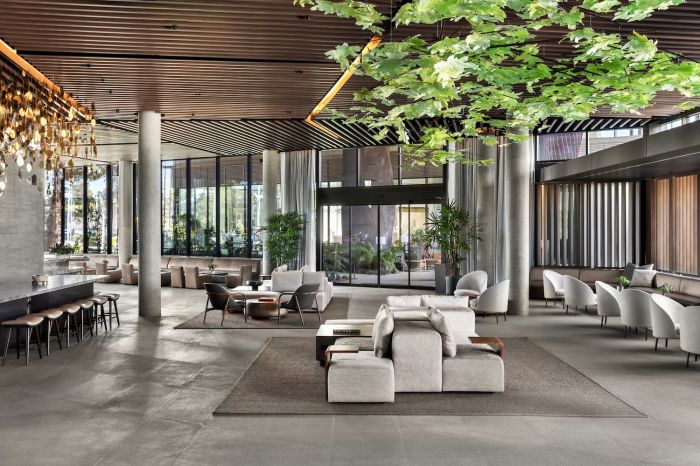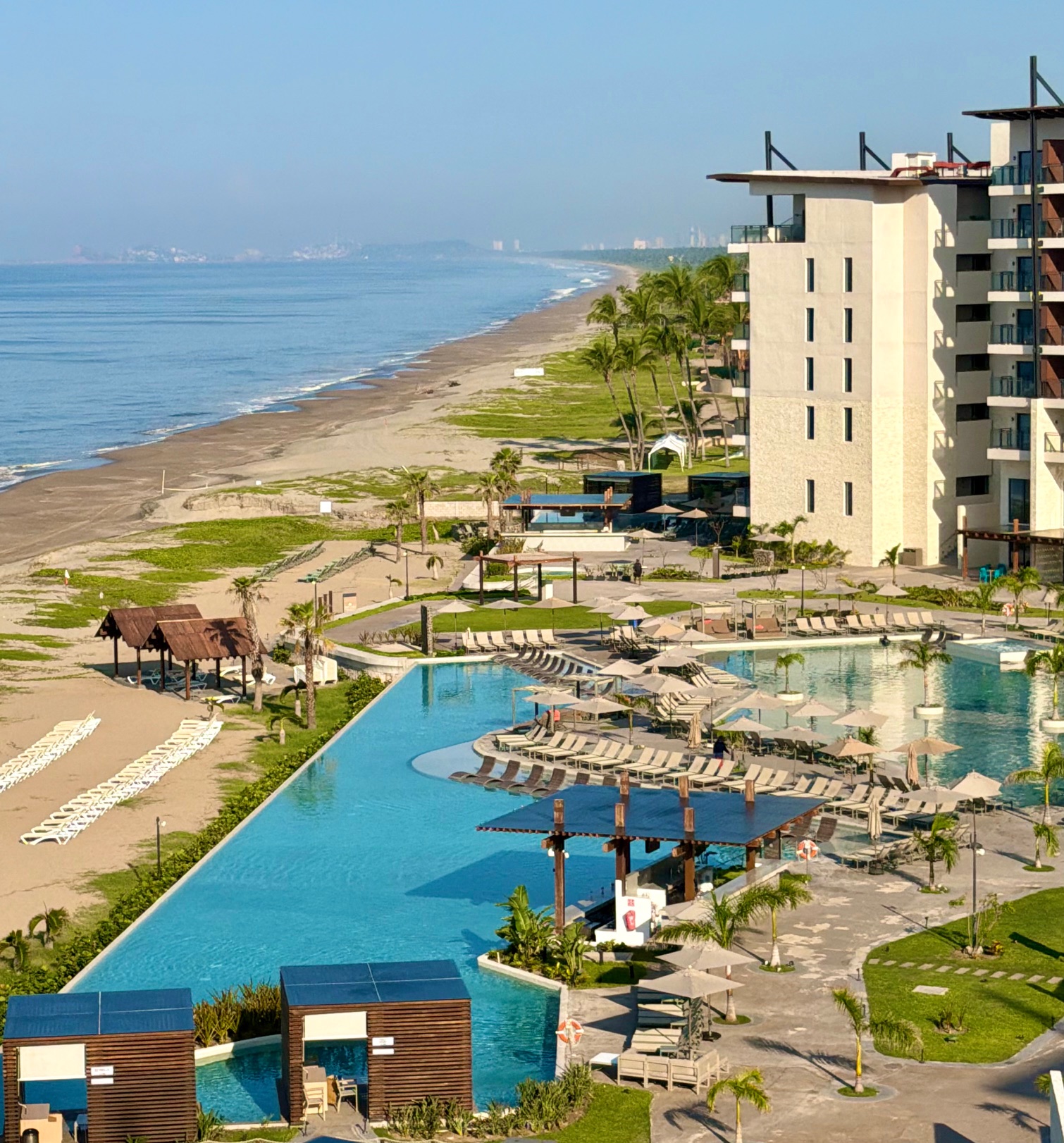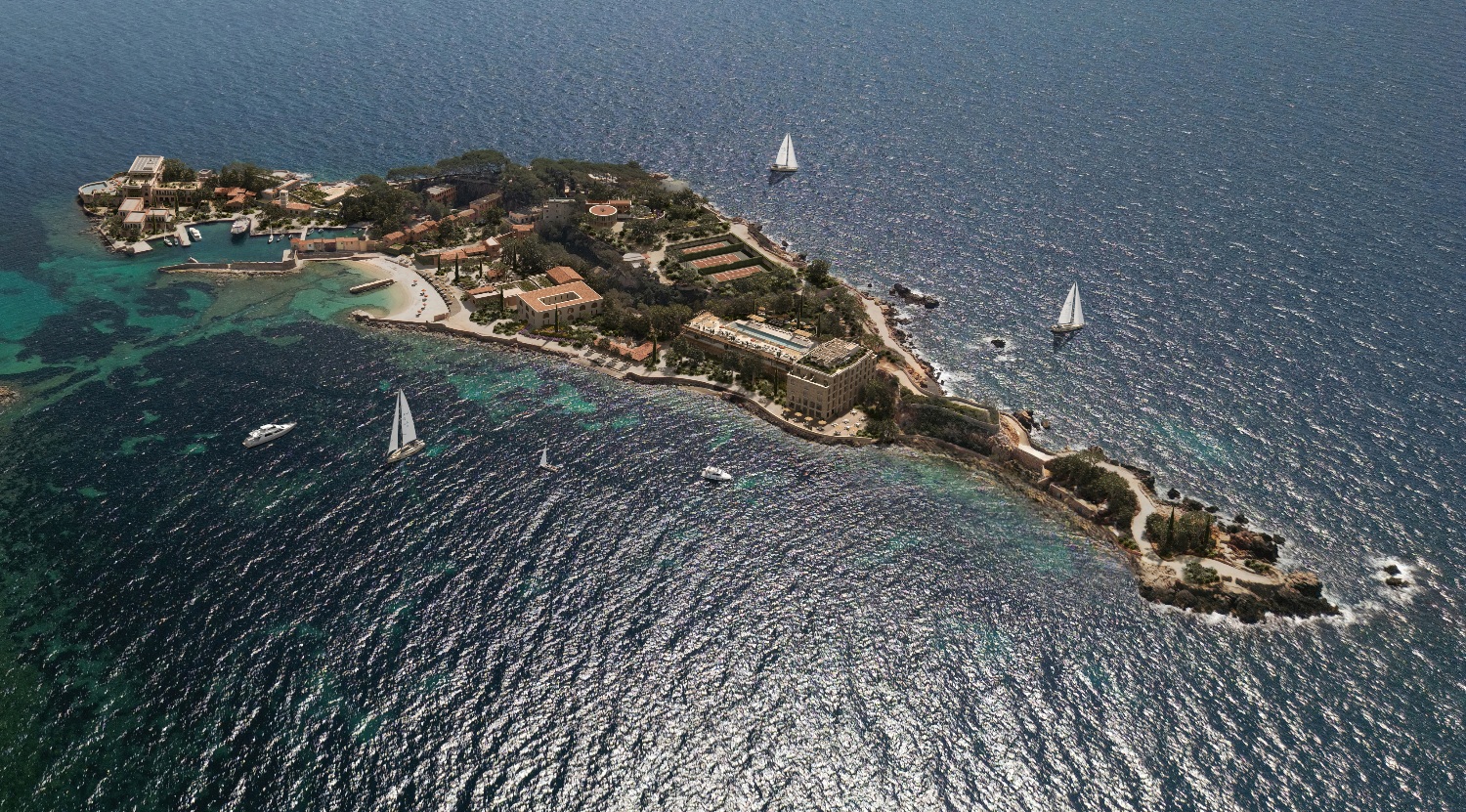Australia’s Mornington Peninsula and the Jackalope Hotel: The Art of Becoming Somewhere Else
There is a certain alchemy in leaving a city behind. For those who live in Melbourne Australia, the Mornington Peninsula is that rare escape—barely an hour away, yet carrying the sensation of distance far greater. The drive traces a gentle unfurling: suburbs dissolving into coastal bushland, concrete giving way to open sky. For international travellers, arriving here feels like discovering a landscape both grounded and untamed, offering an unlikely union of refinement and raw earth.
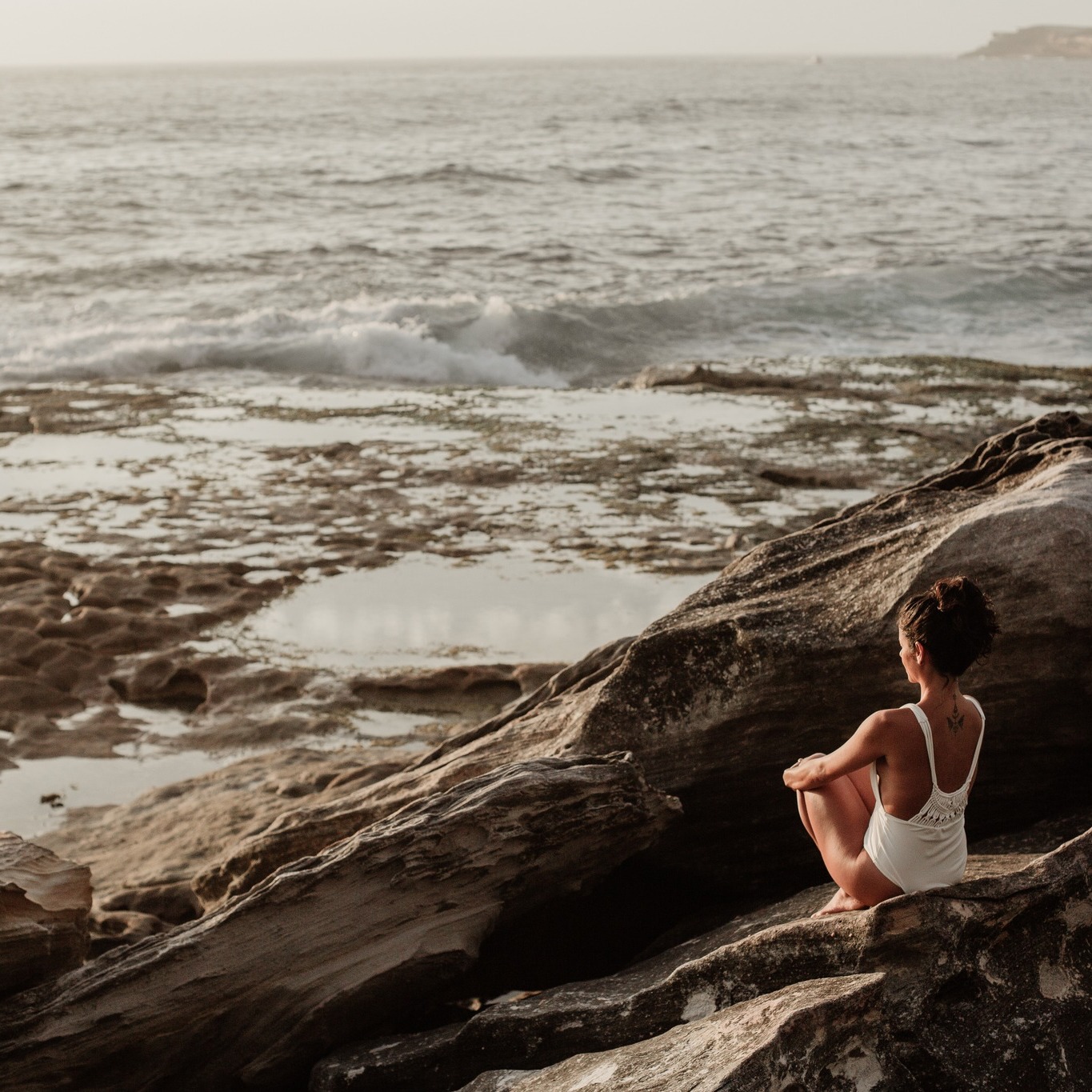
The peninsula resists easy definition. Its topography veers from vineyard rows that stretch with mathematical precision to coastlines fractured by surf. Ancient volcanic soils feed some of Australia’s most acclaimed cool-climate varietals, while the ocean sharpens the air with a briny edge. The light itself seems mercurial, shifting from crisp clarity to soft haze within a single afternoon. It is a place of perpetual counterpoints—wildness and control, vigour and repose.
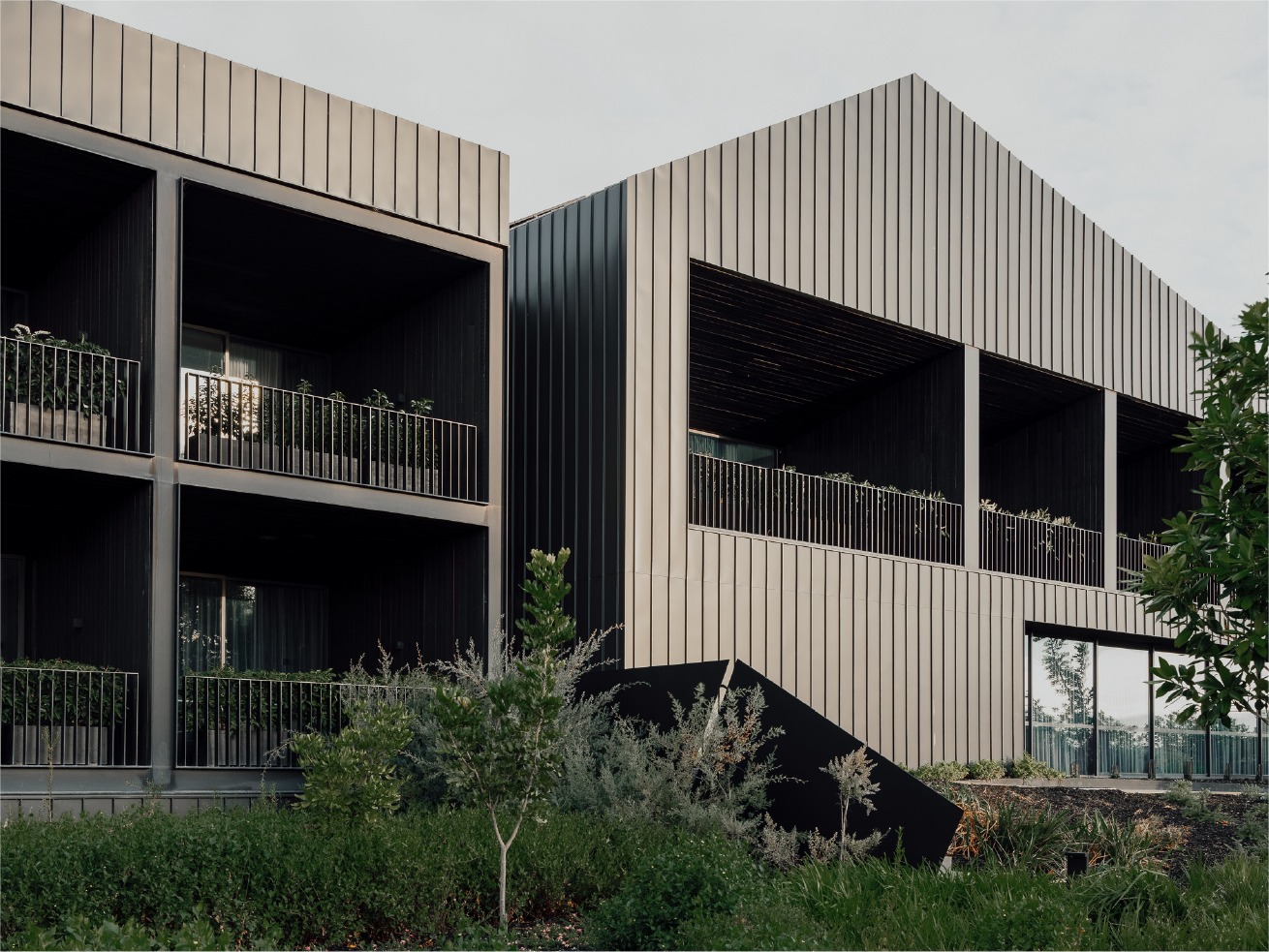
At the centre of this landscape stands the Jackalope Hotel. More than accommodation, it is an experiment in myth-making, drawing its name from a creature of folklore—a horned rabbit born of tall tales and trickery. Here, that invention has become concrete and shadow, set against the vines of Willow Creek. The result is a building that feels both of the earth and defiantly apart from it: black zinc and charred timber catching every change in light, geometric planes set against the undulating green.
Arrival makes its intentions clear. The seven-metre black aluminium jackalope by Melbourne artist Emily Floyd looms at the entrance, part sculpture, part sentinel.
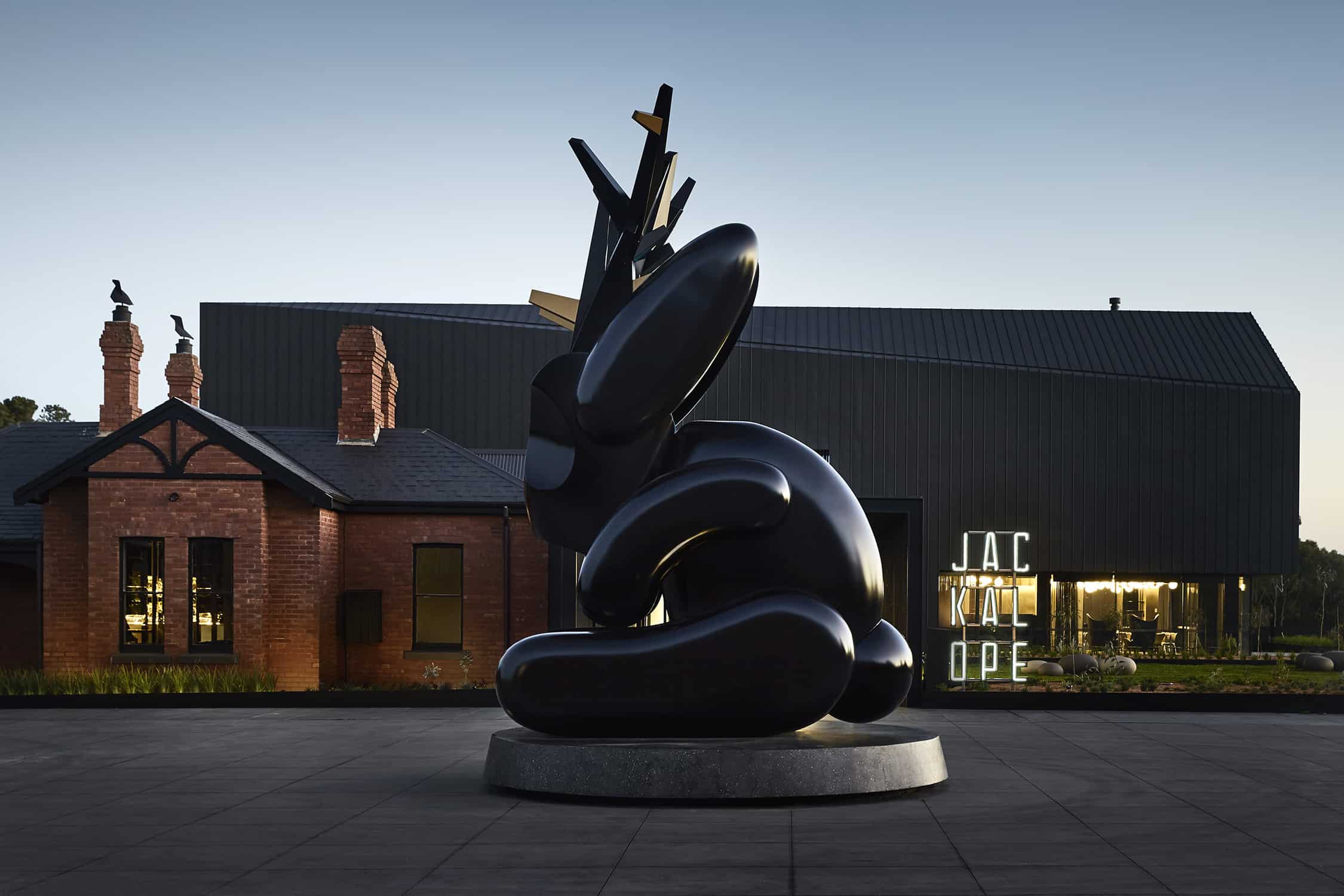
Inside, the design is cinematic without being ornate. Velvet drapes soften the sunlight, while cool marble surfaces and burnished metals catch the sculptural lighting just so. Furniture is carefully chosen: low leather chairs, timber tables, and clean-lined seating create a sense of deliberate balance. Art punctuates the interiors thoughtfully—abstract canvases and sculptural pieces provide moments of intrigue without overwhelming the space.
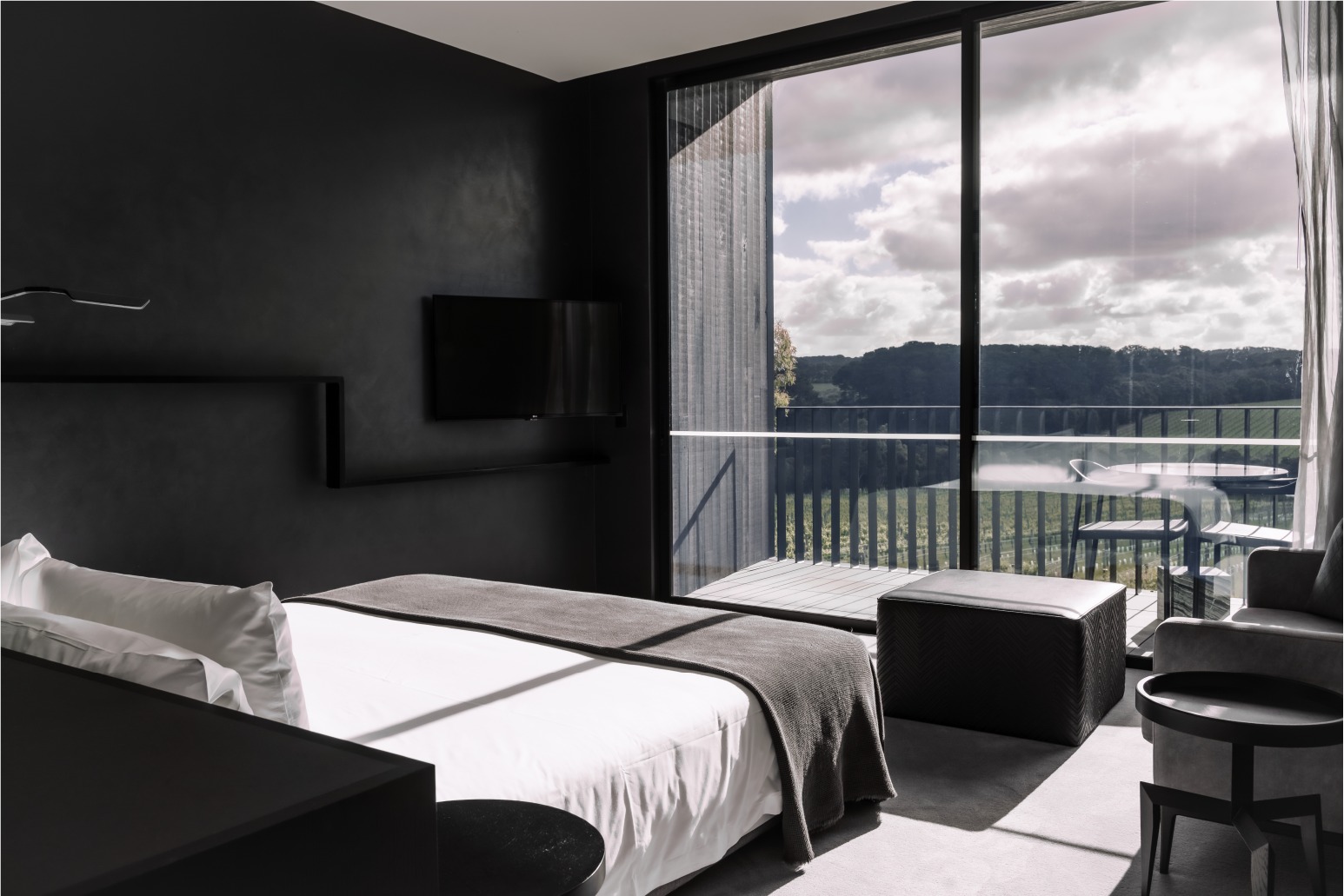
The 45 guest rooms offer a study in duality—dark, moody interiors that open to vineyard views washed in changing light. Floor-to-ceiling glass transforms each room into a private observatory, where dawn creeps in with silver-grey mist and evenings dissolve into shadows over the vines.
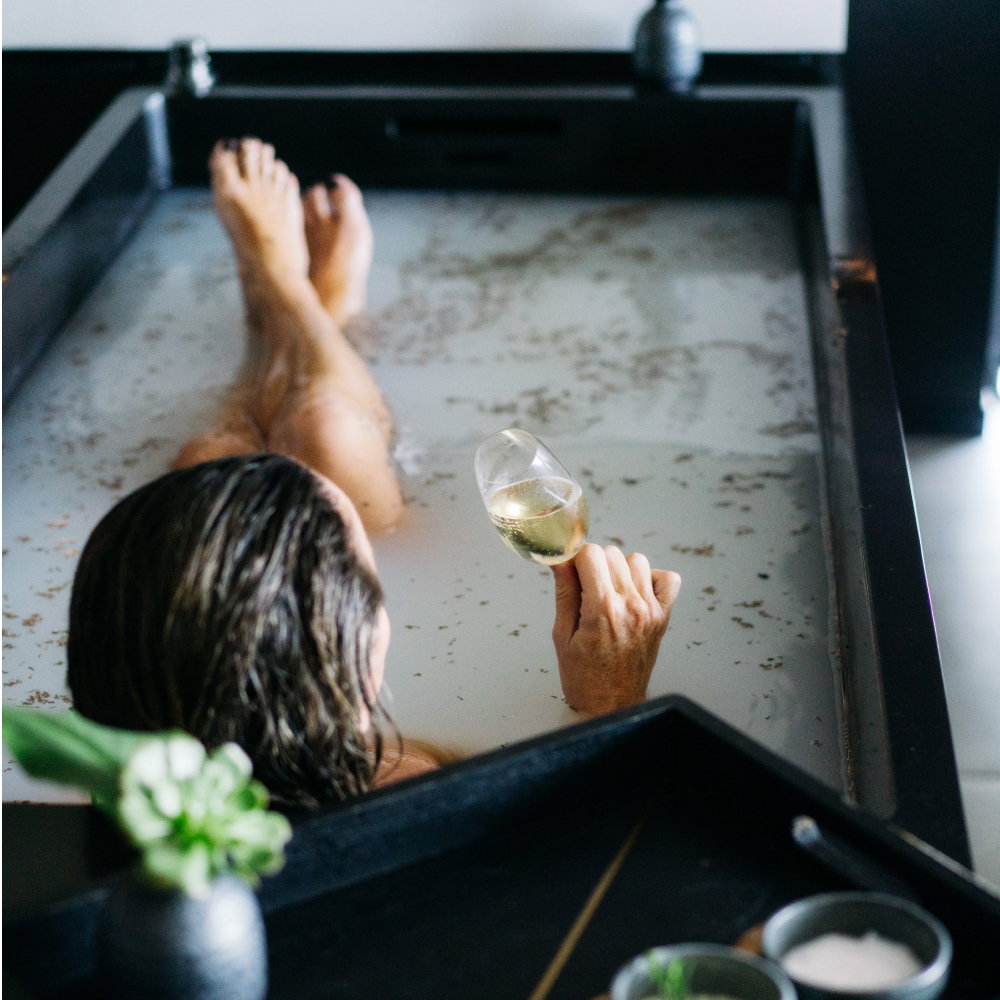
Details feel deliberate rather than decorative: a freestanding black tub positioned as sculpture, minibars stocked with regional favourites, lighting that shifts almost imperceptibly with mood. It is an atmosphere that prepares guests not just to rest, but to transition into the other worlds Jackalope has conjured on its grounds.
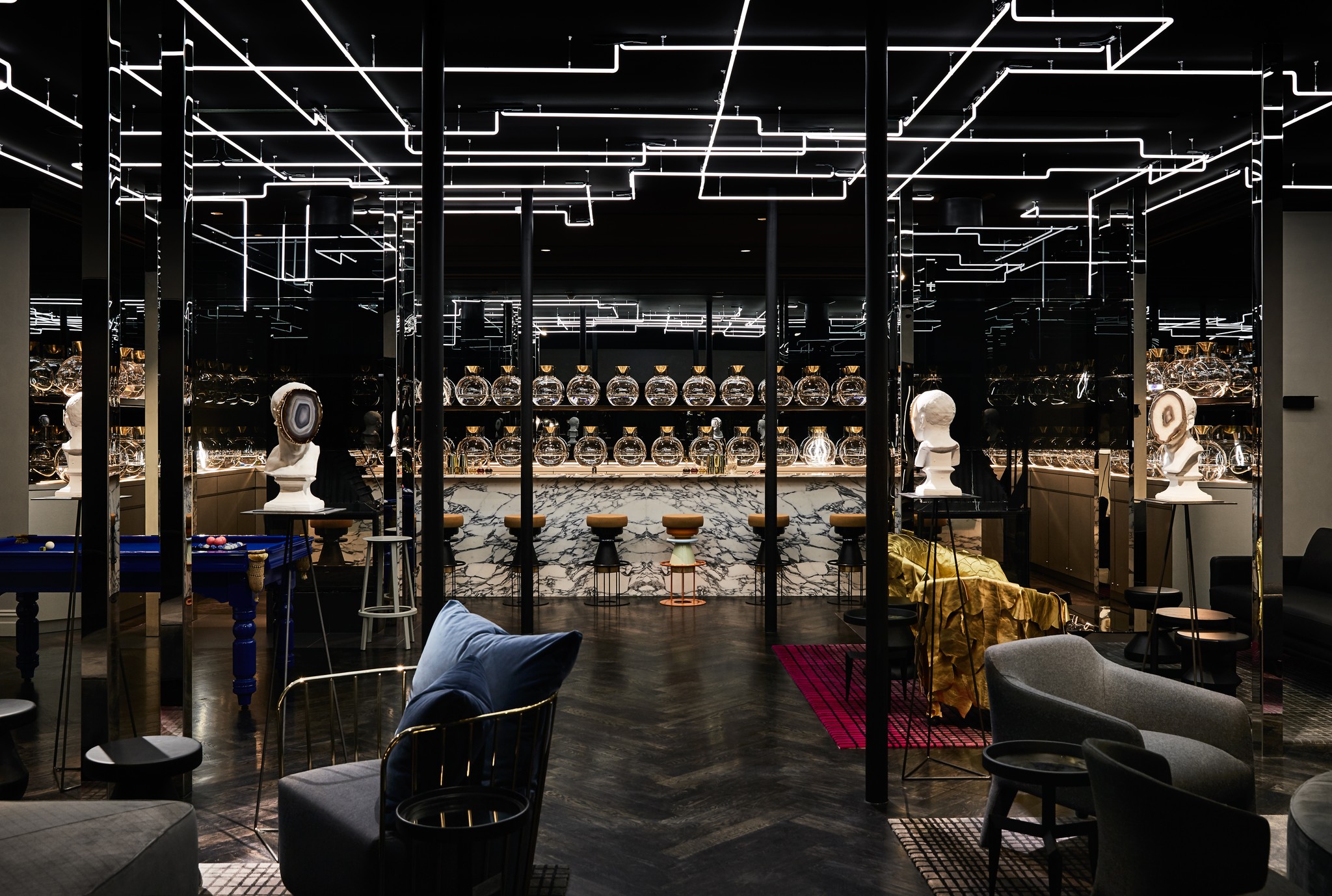
Chief among them is Flaggerdoot, the hotel’s bar and its most theatrical stage. Set within a restored Edwardian homestead, the space bends expectations at every turn. Neon light cuts through century-old timber; surreal artworks interrupt the Victorian bones of the building; glass shelves glimmer with flasks, beakers, and chemical apparatus more evocative of a laboratory than a bar.
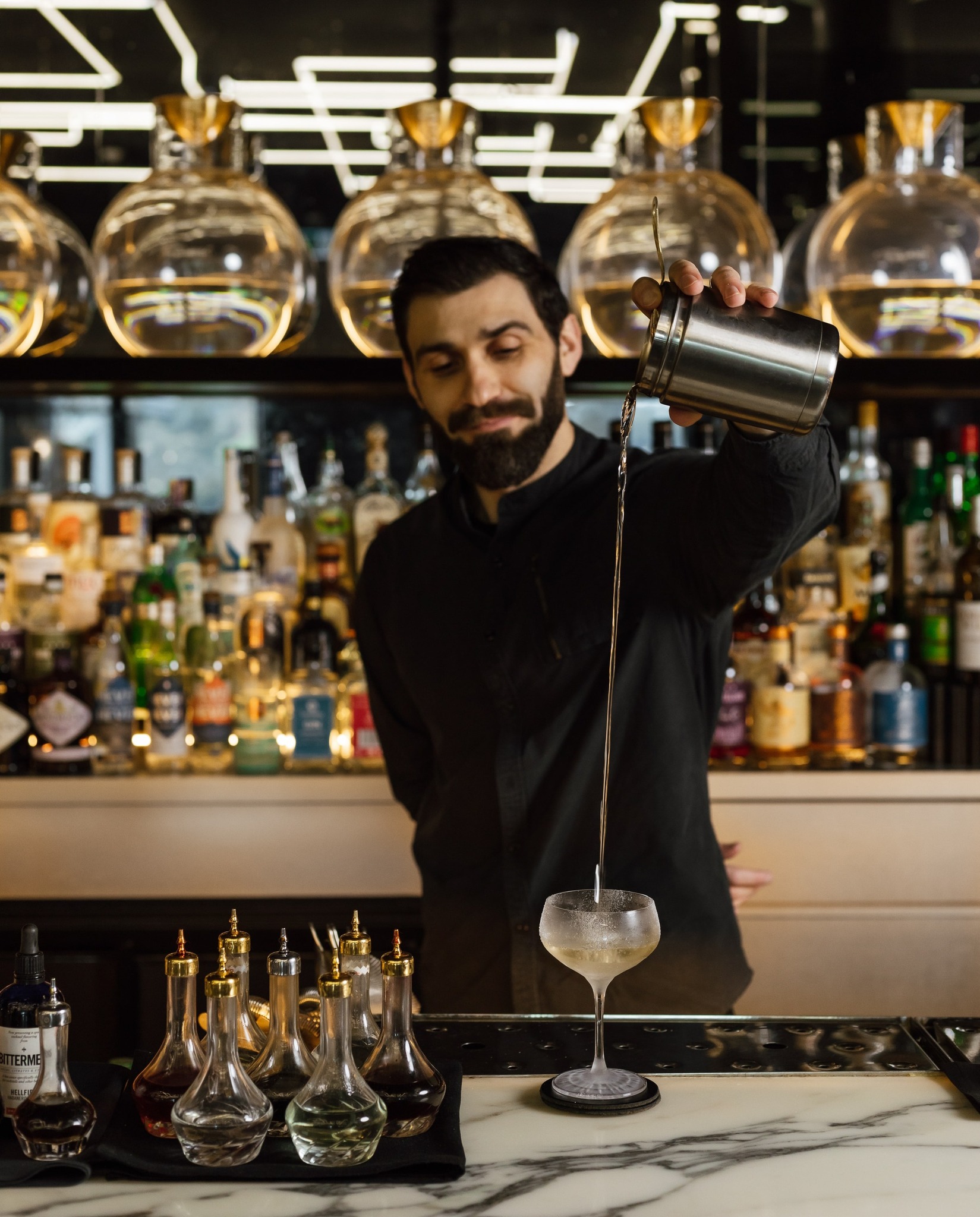
Cocktails here are not assembled so much as orchestrated—rare spirits and house-made infusions layered into drinks that feel as conceptual as they are delicious. Some are built around native botanicals; others play with smoke, acidity, or temperature. Each glass is an experiment, a nod to the bar’s alchemical aesthetic. Yet for all its theatre, Flaggerdoot retains warmth. Conversations stretch long into the night, the bar’s atmosphere encouraging the sense that time here behaves differently, bending to the cadence of mood rather than the clock.
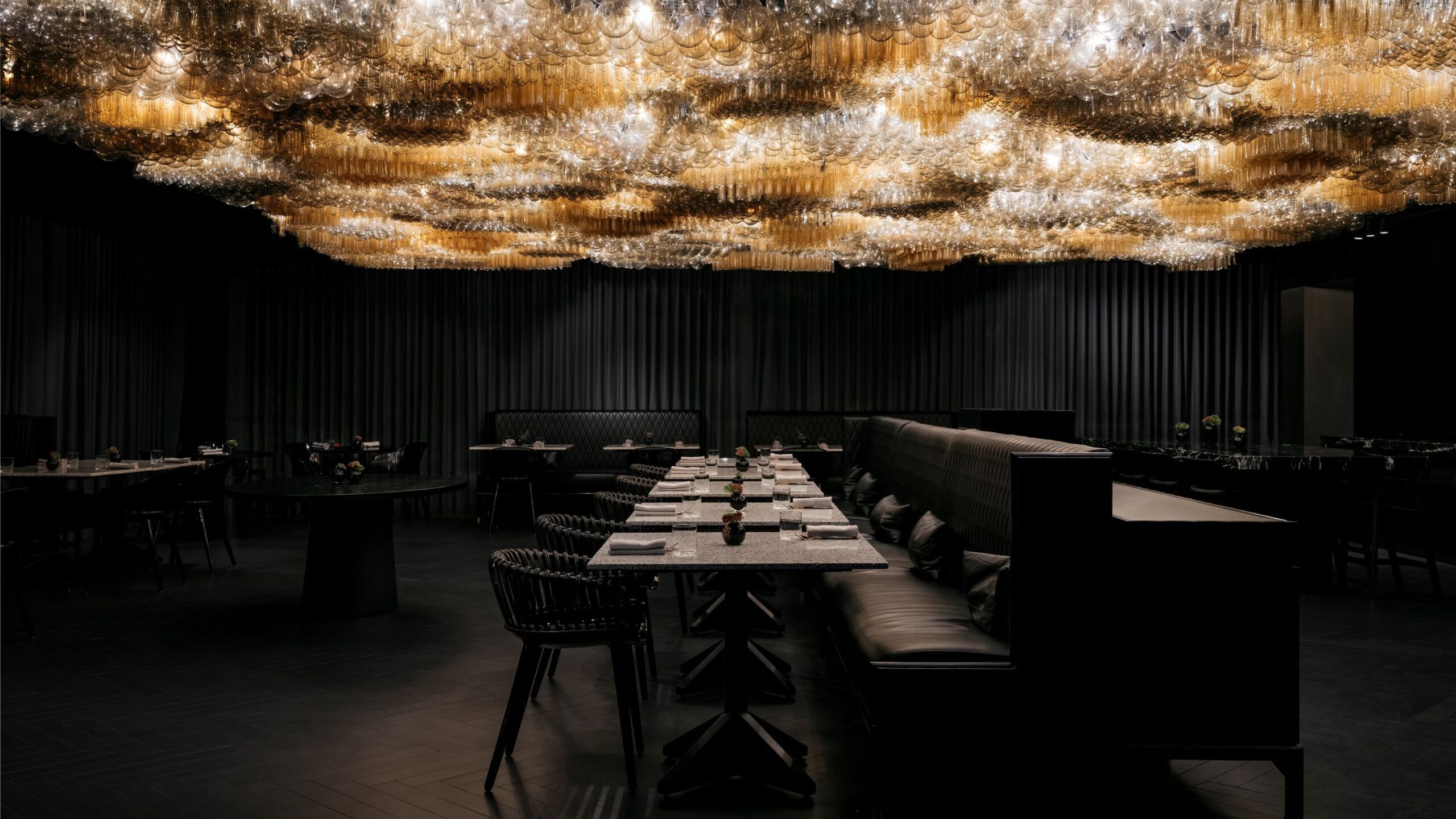
If Flaggerdoot is the overture, Doot Doot Doot is the grand act. Beneath a ceiling installation of 10,000 suspended bulbs, the dining room glows with an energy that is both intimate and charged. The menu takes the peninsula’s produce as its foundation, elevating it with confident restraint: lacquered duck breast paired with subtle inflections of spice, vegetables treated with the precision of centrepieces, and desserts that weave espresso, banana, and cream into something at once playful and refined. The service is polished but never stiff, allowing the ritual of dining to unfold as both performance and pleasure.
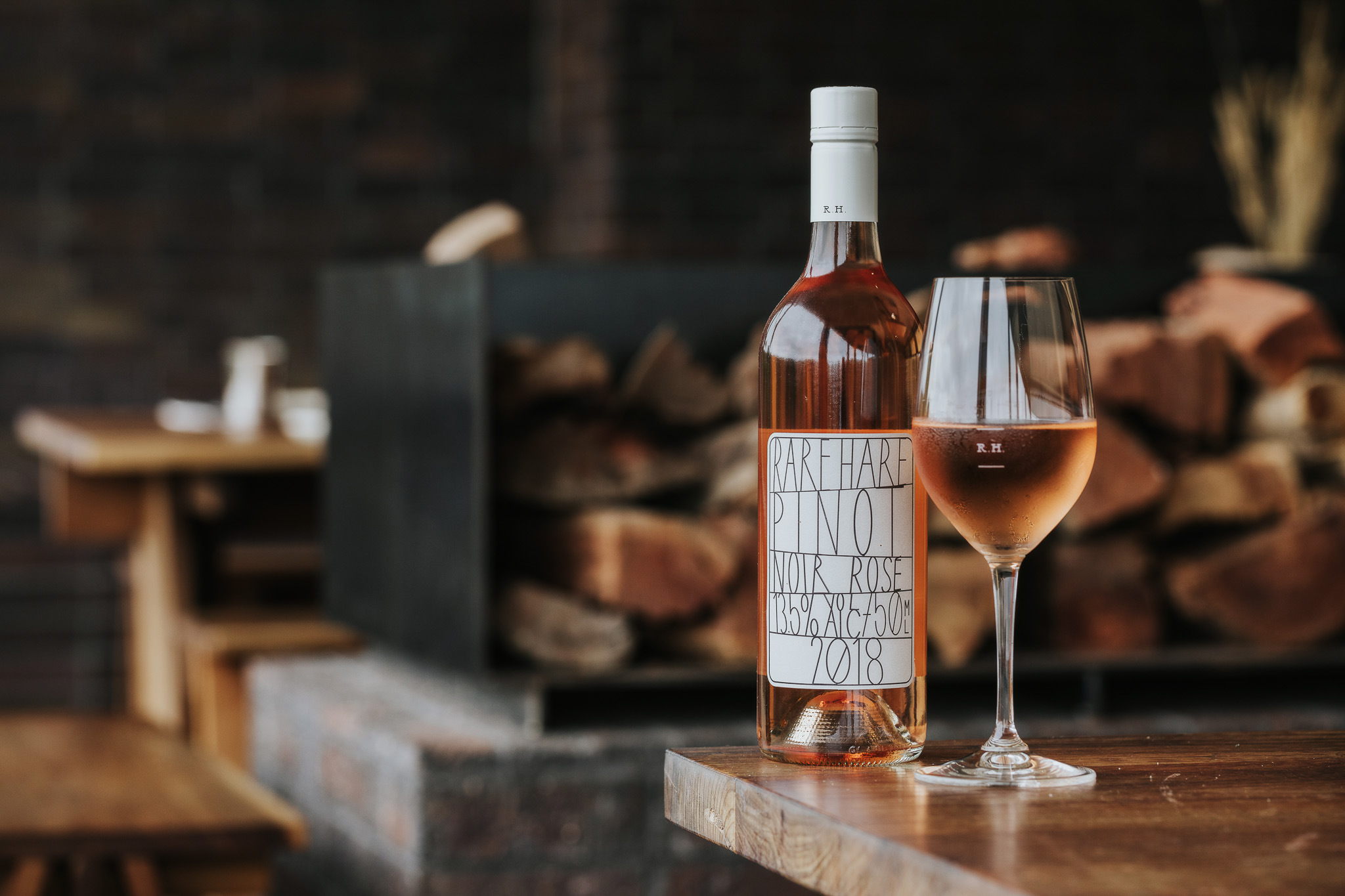
The estate itself is threaded with vines belonging to its onsite winery, Rare Hare, which has become a destination in its own right. Here, bold cool-climate wines are poured with unpretentious ease—Pinot Noir and Chardonnay that speak clearly of their volcanic soils and coastal air. To taste them where they are grown, in view of the very rows that yielded them, reinforces the hotel’s central theme: that myth, landscape, and craft can converge seamlessly.
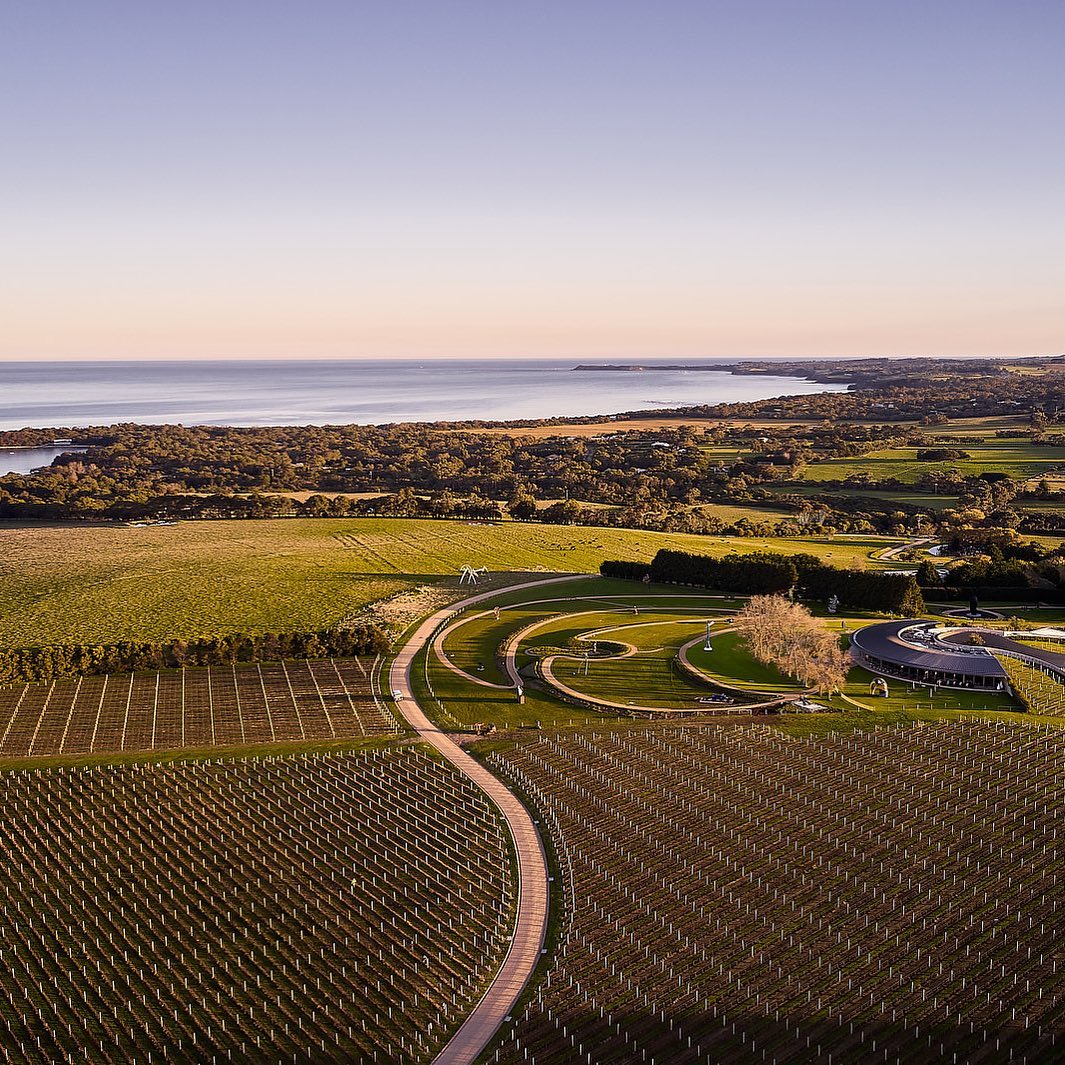
Yet the peninsula extends beyond Jackalope’s gravitational pull. A short drive leads to Pt. Leo Estate, where sculpture rises from vineyard slopes like a dialogue with the sea. The 60-acre park is both contemplative and dramatic: Jaume Plensa’s colossal cast-iron face gazes toward the horizon, while George Rickey’s kinetic works sway with the wind.
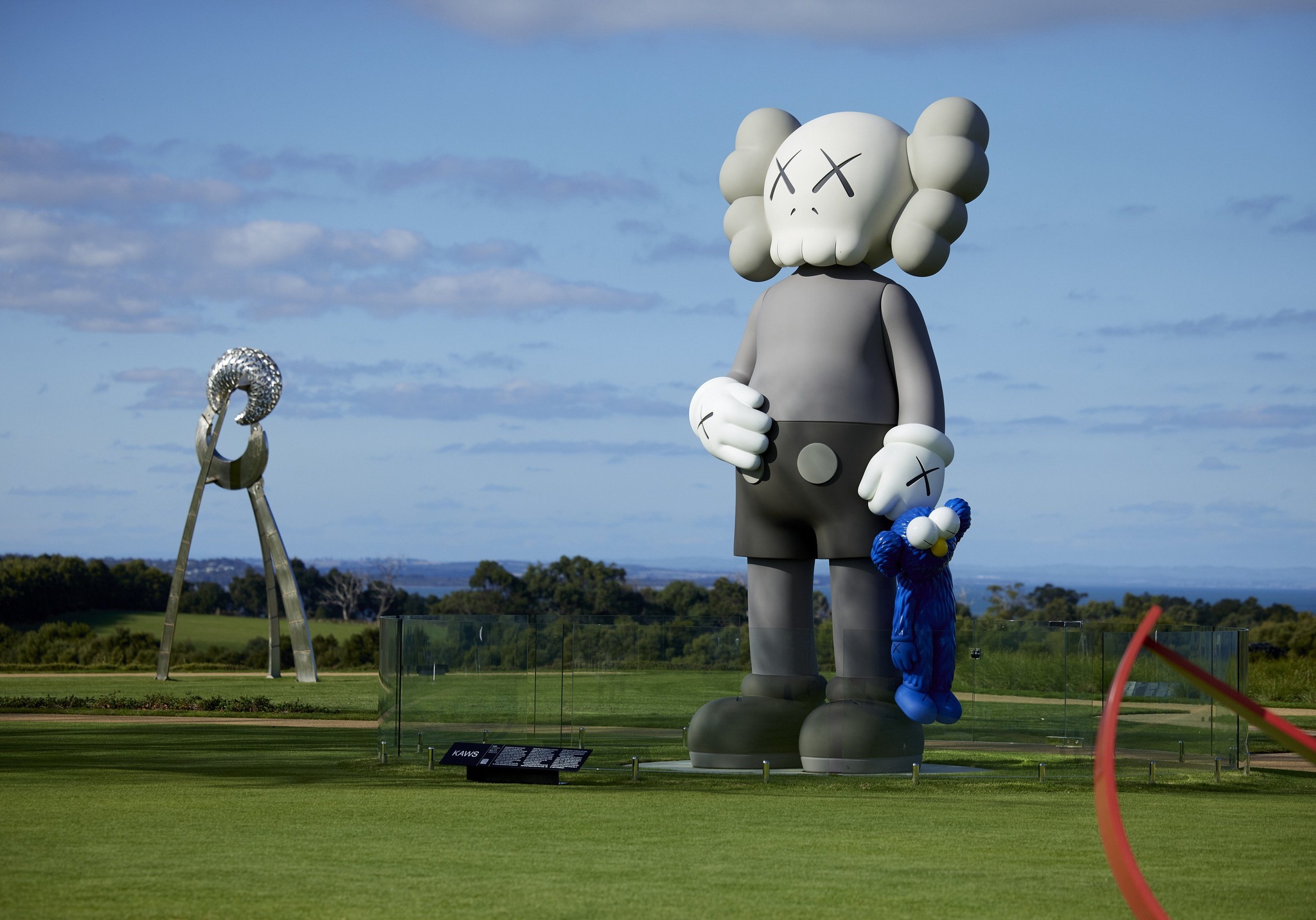
The architecture by Jolson is fractured and monumental, its concrete and timber forms framing expansive views toward Bass Strait. Here, wine becomes part of the canvas. Tasting Pinot Noir or Chardonnay beside monumental steel and stone, one begins to feel the terroir not only on the palate but in the sculptural encounter with place.
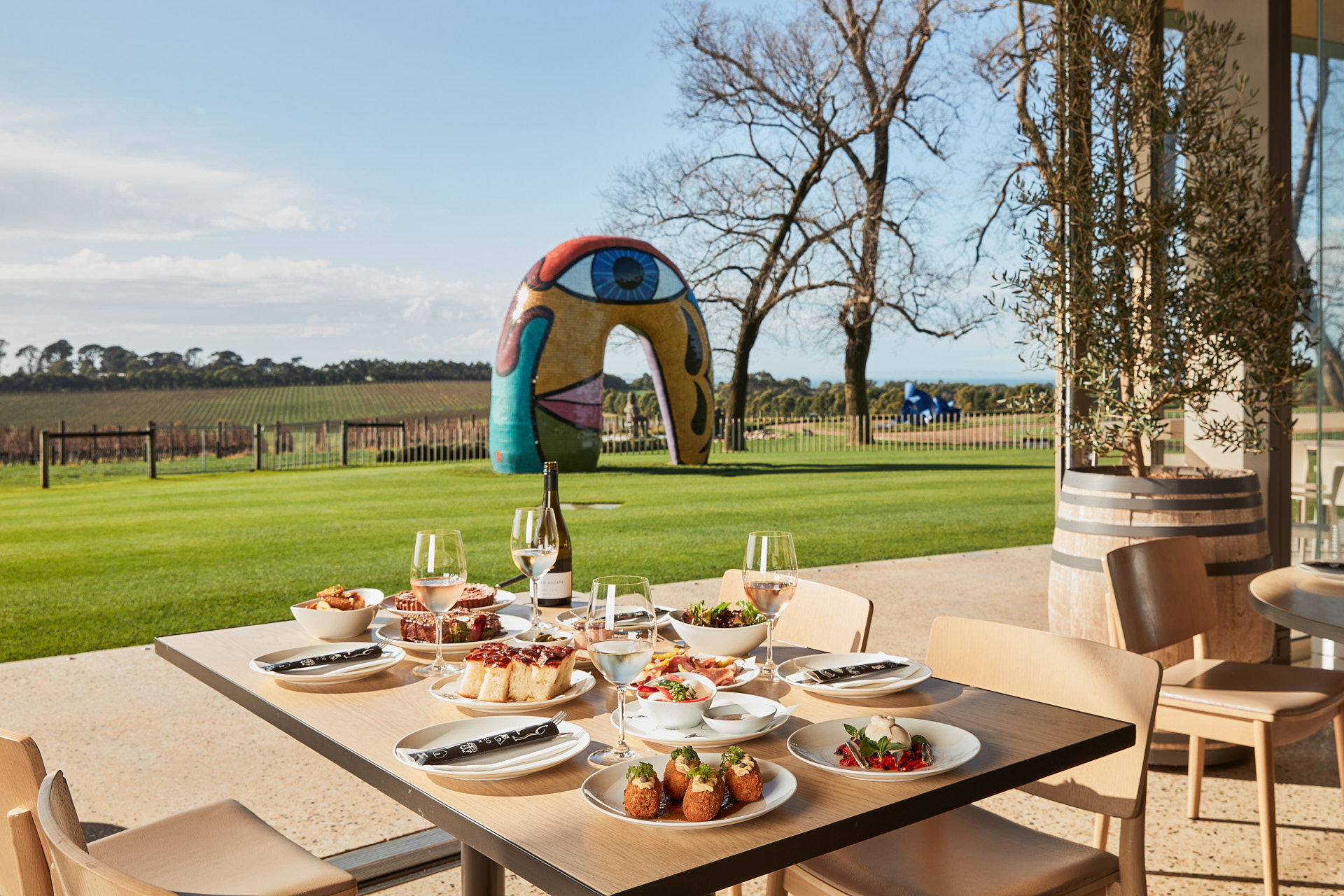
Dining at Laura continues this immersion, each plate composed as though to match the art beyond its windows—seafood perfumed with lemon myrtle, lamb paired with Syrah, vegetables touched with smoke and wattleseed. The food does not shout for attention; it lingers, unfolding slowly in tandem with the estate’s rhythm.
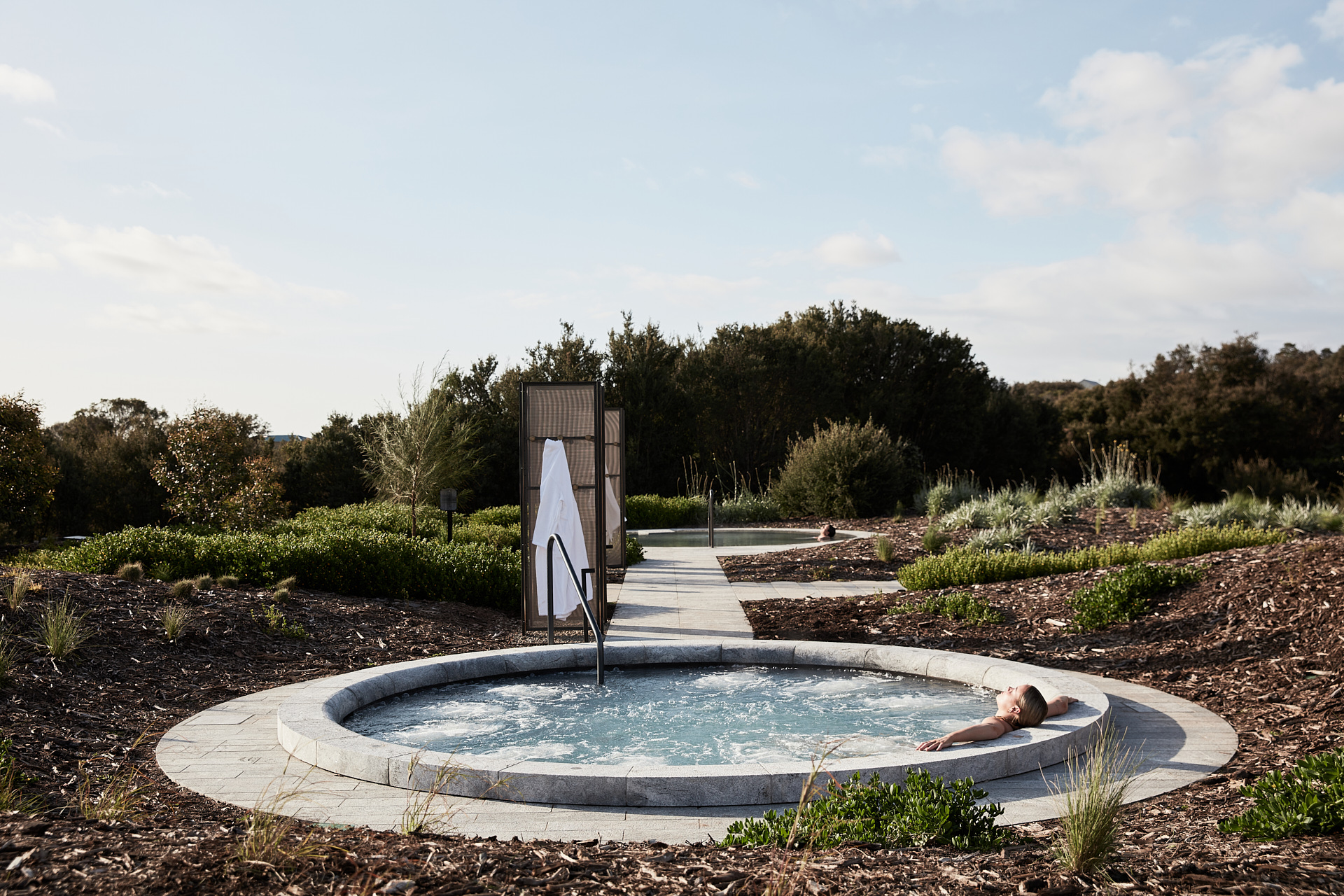
Further inland, Alba Thermal Springs brings the narrative into another register: water as architecture, stillness as design. Set within undulating bushland, the spa reveals itself through curved stone walls and open-air pools that rise seamlessly from the earth. The thermal waters, drawn from deep underground, are laden with minerals that soothe both body and mind. To move between salt rooms, steam chambers, and open pools beneath eucalyptus is to experience a form of luxury stripped to its elemental core. Lunch at Thyme continues the restraint—locally caught fish with lemon myrtle beurre blanc, roasted pumpkin with wattleseed, dishes that echo the land’s simplicity while retaining precision.
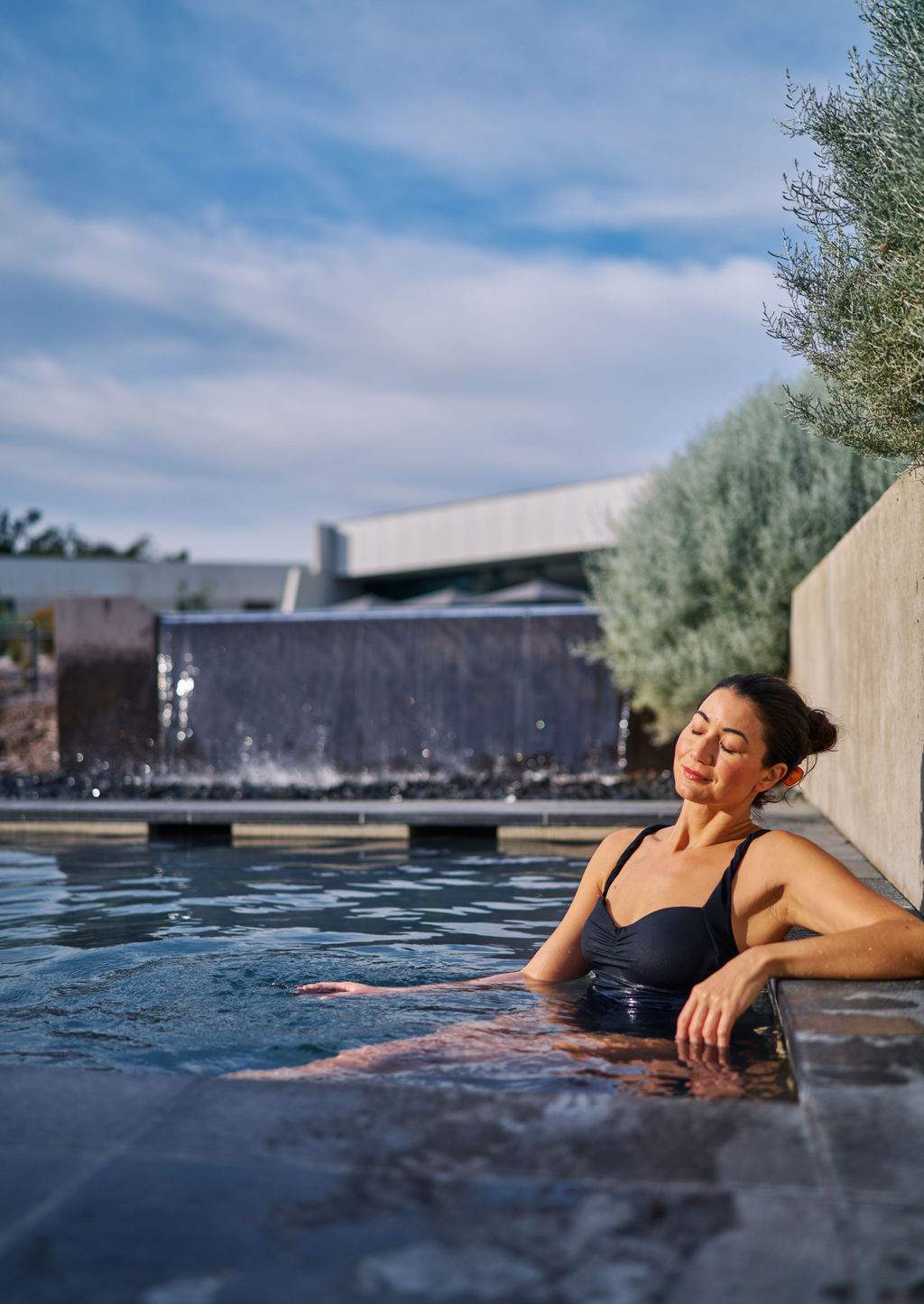
Together, these places create a continuum rather than isolated experiences. The peninsula is not merely a backdrop for indulgence but an active presence, shaping design, flavour, and atmosphere at every turn. It compels visitors to recalibrate: to watch the play of light across a vineyard at dawn, to trace sculpture against the horizon, to float in mineral water that feels both ancient and immediate.
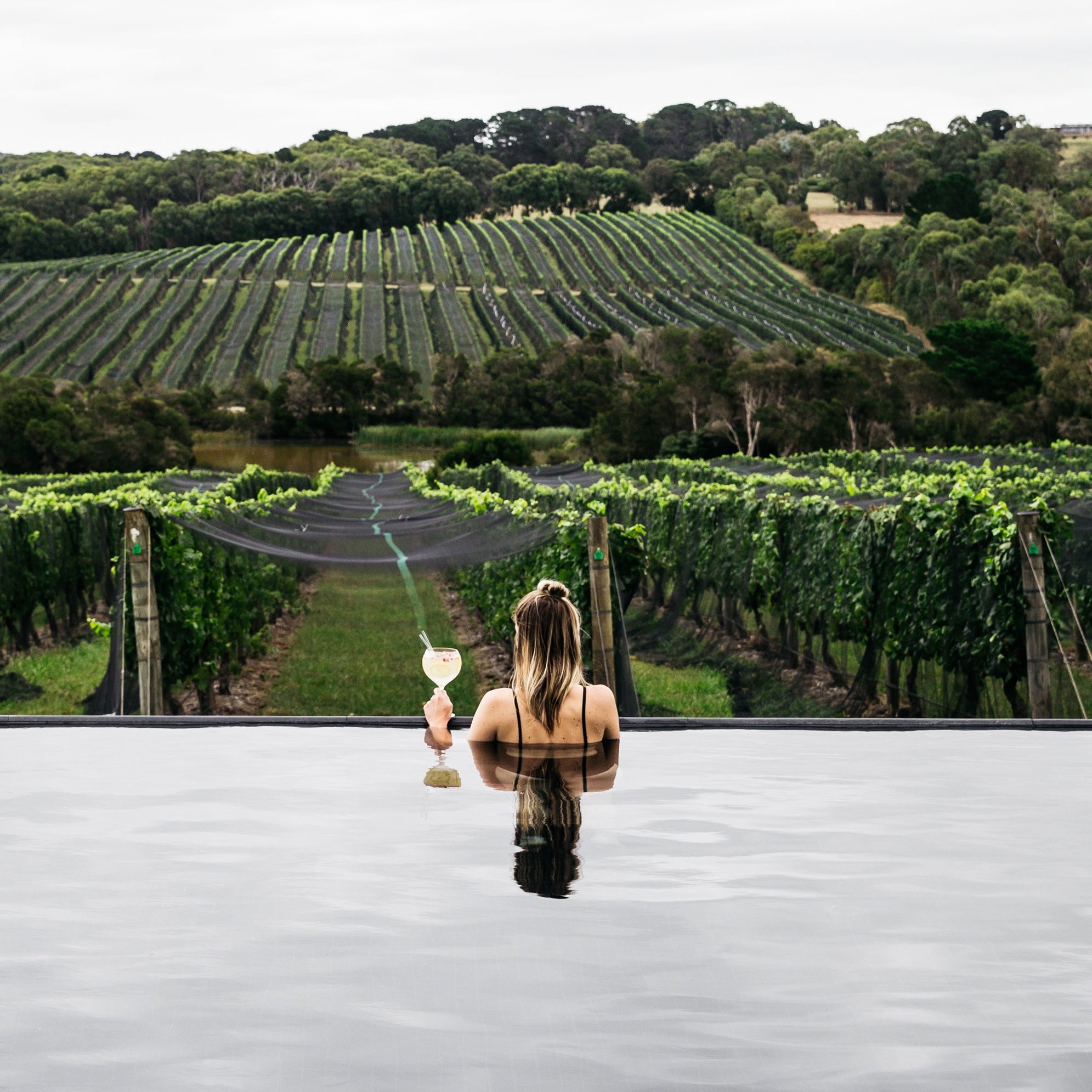
Jackalope makes myth tangible, Pt. Leo frames art against soil and sea, and Alba distills the landscape into water and stone. Taken together, they transform the Mornington Peninsula into something more than a retreat from Melbourne. For those arriving from elsewhere, it is an encounter with a landscape at once precise and untamed—a place that does not just host its visitors but quietly alters them.








